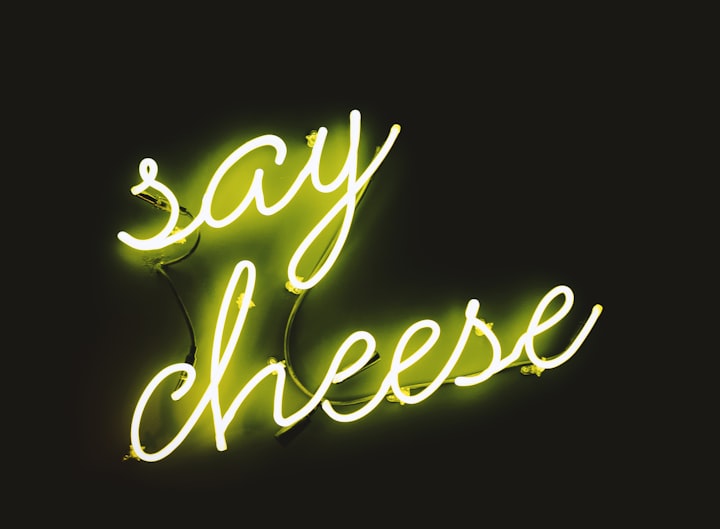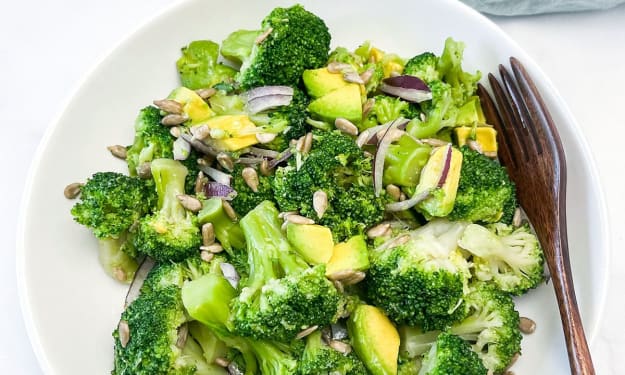Cysteine-Rich Foods Increase Health And Vitality
Ever-evolving medical research data indicates that adequate cysteine levels in the body help delay the aging process and provide symptomatic relief for a broad range of health complaints.

By: Marlene Affeld
It's sound advice; eat more cysteine-rich foods. You view the ads and hear the buzzwords; L-Cysteine, Cysteine, Cys, or C are common names bantered around the water cooler at the office. Magazine articles about the health benefits of the critical amino acid tout the many health and physical fitness magazines and websites.
Cysteine is integral to optimum health. You may know that cysteine-rich foods should be part of your well-rounded diet but remain a bit confused as to which foods are good sources of cysteine.
Cysteine-rich foods are relatively simple to include in the diet as the sulfur-bearing, semi-essential amino acid is present in so many different types of foods. L-cysteine is known as a semi-essential amino acid, an essential building block of protein. If you are vegan, cysteine abounds in broccoli, Brussels sprouts, garlic, kale, parsley, onions, avocados, squash, tomatoes, and red peppers.

A salad or stir-fry dish with tofu and lots of fresh vegetables is a great way to make sure you get your daily supply of natural cysteine. If you like seeds and nuts, munch away on pumpkin seeds, pecans, walnuts, macadamia, Brazil, and hazelnuts. Cashews, almonds, and pistachio nuts are also additional good sources of fiber, many important nutrients and are considered cysteine-rich foods. Cysteine is called a semi-essential amino acid because, while it can be ingested from the foods we eat, our bodies can produce it from another amino acid called methionine.
One of cysteine’s most important roles in the body is involved with helping the body synthesize glutathione (GSH). Cysteine is a glutathione precursor, integral to the support of the immune system. Chronic, unrelenting stress is one of the biggest causes of depletion of glutathione in our bodies. Our bodies were never designed to accommodate the prolonged adrenaline and cortisol released in response to stress, whatever its cause. Adding cysteine-rich foods supports the production of glutathione and helps mitigate this unhealthy response to stress.
Whey protein contains high levels of the several naturally occurring glutathione precursors, including cysteine, immunoglobulin, lactoferrin, and active peptides. Choose a whey protein that is cold-processed without added additives or sugars. Many grains are excellent cysteine-rich foods, buckwheat, quinoa, or oats.

Another important reason to make sure you have adequate levels of cysteine in your system is that cysteine is vital for healthy hair growth, even skin tones, strong nails, and can help you lose unwanted pounds. High-protein diets with cysteine-rich foods promote weight loss and subsequent weight maintenance.

The International Journal of Obesity reports that research studies conducted on animals evaluated the effects of a diverse array of amino acids on food intake in rodents and identified l-cysteine as the most anorexigenic. These anorexigenic properties of cysteine-rich foods help produce a sense of satiety and make it easier to make wise diet choices.
For persons that include animal protein in their diet, poultry such as turkey, chicken, quail, pigeon, pheasant, goose, and duck are great sources of protein and qualify as cysteine-rich foods. According to information published in the National Nutrient Database, one of the best sources of cysteine, and once broken down in the liver to cysteine, is organic turkey breast meat. A 3-ounce serving contains .25 grams. Any seafood, especially wild-harvested salmon, provides beneficial amounts of cysteine. Pork, beef, lamb, and wild game are also cysteine-rich foods.

If you are not lactose intolerant, dairy products such as cheese, cottage cheese, half and half, cream, cream cheese, ice cream, yogurt, buttermilk, butter, and milk all are cysteine-rich foods.

To avoid excess fat and calories, dairy products, as well as red meats, should be included in the diet in moderation. Traditional nutritional wisdom tells us that the best way to ensure a plentiful supply of cysteine-rich foods is to try to follow a well-rounded diet that includes lots of fresh vegetables, grains, turkey, and salmon.

Eggs, we were once told, were a “no-no” and should be avoided because they could raise cholesterol levels. New scientific data refutes that claim and eggs are once again considered “good” for us. Scientists have just discovered that reactions in the body are responsible for cholesterol levels and foods do not contribute in the way once perceived.

For persons wishing to raise their cysteine level, that is terrific news as egg yolks are one of the very best cysteine-rich foods available. Have an egg salad sandwich for lunch or cook up some hard-boiled eggs for a quick and nutritious snack. Eggs also contain B and D vitamins, selenium, and iron, which make them a treasure trove of nutrition.
Cysteine Amino Acid Supplements
Cysteine amino acid (Cys), also known as L-cysteine or Acetyl L-cysteine is a semi-essential proteinogenic amino acid that includes the element sulfur. Cysteine naturally occurs in a broad assortment of foods, including meat, poultry, fish, grains, nuts, seeds, dairy products, egg yolks, sprouts, garlic, onions, broccoli, and red peppers.

Cysteine with a chemical formula of HO2CCH (NH2) CH2SH is one of two sulfur-containing amino acids; the other is methionine. Cysteine amino acid functions as an essential building block of protein and acts as a catalyst in many crucial metabolic cycles. Because it is biosynthesized in the human liver, it is not considered an essential amino acid.
In the body, cysteine is formed from homocysteine, derived from the essential amino acid methionine, and can be converted to taurine and cysteine. Methionine, an essential amino acid, is not produced by the body but only comes from dietary sources. In combination with glutamic acid and clycine, cysteine can form glutathione, a powerful detoxifier, and antioxidant. A cofactor in a host of important enzyme systems, glutathione (GSH), helps protect the body from toxic heavy metals, chemicals, and smoke.
Research studies show that methionine transforms into homocysteine in the body; homocysteine is a high-risk factor which contributes to the development of atherosclerosis (hardening of the arteries). Due to this concern, methionine should not be considered the primary source of cysteine for building glutathione. (To avoid this risk, supplemental L-methionine should not be taken.)
Considered a cell membrane stabilizer, cysteine, a precursor to glutathione, may help reduce the hazards inherent in cigarette smoking and alcohol consumption. Specifically, cysteine helps neutralize aldehydes produced in the liver as by-products of the metabolism of pollutants, fats, alcohol, and some drugs. In sufficient levels, administered under the care of a physician, cysteine binds with heavy metals such as mercury, lead, copper, and cadmium and aids in their elimination.
Administered by a physician, cysteine is used in cases of acute acetaminophen poisoning (Tylenol). Acetaminophen presents in a wide range of over the counter as well as prescription medications. Acetaminophen poisoning causes liver damage and is the number one cause of death from acute liver failure in the United States. Many doctors in the treatment of Alzheimer’s disease, mental illness, HIV/AIDS, chronic bronchitis, burns, and influenza also prescribe cysteine.
When it comes to influenza, NAC exhibits excellent promise. In H5N1 influenza or bird flu, a very dangerous and potentially lethal infection, it diminished symptoms and shortened the severity of those infected and boosted the immunity of those trying to fend off the “bug.” In 2010, when the pandemic was at its height, it was discovered that NAC helped inhibit virus replication and the expression of pro-inflammatory molecules in cells infected with H5N1. NAC is also proving a promising weapon in the war against seasonal flu and flu-like illnesses.
When cysteine is taken as a dietary supplement, it is usually in the form of N-acetyl-L-cysteine (NAC). NAC is not found in food.
NAC is a modified version of the sulfur-containing amino acid cysteine. It is considered a powerful anti-aging nutrient, helpful in preventing oxidation and free-radical cell damage. A substantial body of evidence gleaned from multiple medical research studies, indicates that NAC has also proved beneficial in the treatment of several medical conditions, including:
• Exposure to noxious chemicals
• Enhanced healing after surgery
• Prevention and treatment of cancer
• Improved healing of skin irritations such as psoriasis
• Hair loss
• Cataract prevention
Commenting on the benefits of NAC, Stanford University’s Dr. Kondala R. Atkuri, notes, “NAC has been used successfully to treat glutathione deficiency in a wide range of infections, genetic defects and metabolic disorders, including HIV infection and COPD. Over two-thirds of 46 placebo-controlled clinical trials with orally administered NAC have indicated beneficial effects of NAC measured either as trial endpoints or as general measures of improvement in the quality of life and well-being of the patients.”

Over the past three decades, NAC has provided relief for millions of patients suffering from coughs, wheezing, congestion, and the thick phlegm associated with colds, flu, and cigarette smoking. NAC is incorporated in several patented medications for these health complaints. Scientific studies further indicate that NAC regulates the gene for COX-2, an enzyme that causes pain and inflammation.
Medical studies suggest most people benefit from 600 – 1,800 mg/day, although doses up to 2,000 mg/day are considered safe and effective.
Concerns and Cautions
Cysteine amino acid supplements and NAC can be very beneficial in a wide range of medical conditions. However, like all supplements, they should only be taken under the supervision of your healthcare provider to avoid adverse interactions with other supplements, over-the-counter medications, or prescription drugs.
Persons with allergies to dairy, milk, or wheat products should not take NAC or cysteine amino acid supplements. If you are diabetic, do not take any supplements except as prescribed by your doctor.
References:
National Institute of Standards and Technology – L- Cysteine
http://webbook.nist.gov/cgi/cbook.cgi?ID=52-90-4
Pub-Chem – L-Cysteine
https://pubchem.ncbi.nlm.nih.gov/compound/L-cystine
US National Library of Medicine – L-Cysteine Clinical Study
https://clinicaltrials.gov/ct2/show/NCT02120105
About the Creator
Marlene Affeld
“A passionate writer for more than 30 years, Marlene Affeld’s passion for the environment inspires her to write informative articles to assist others in living a green lifestyle.”






Comments
There are no comments for this story
Be the first to respond and start the conversation.